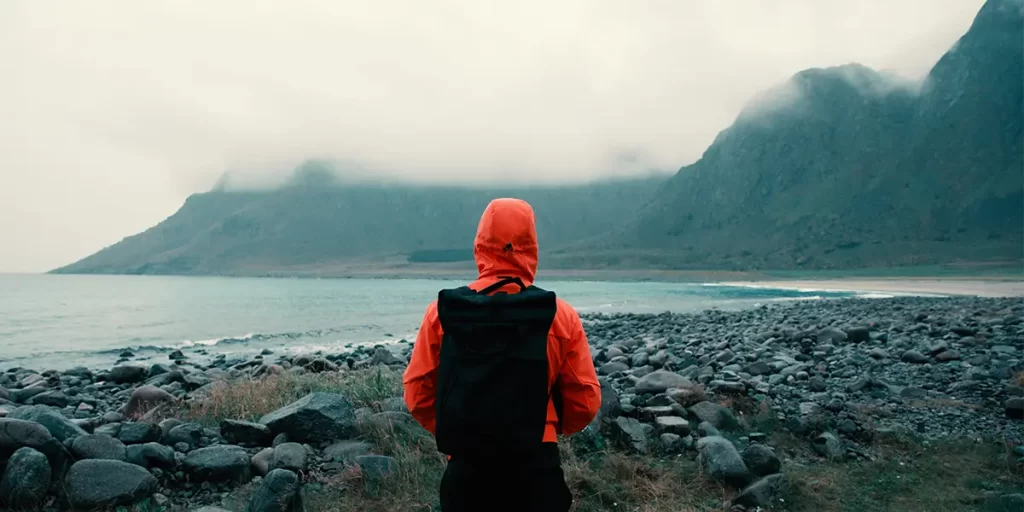

Rain showers can easily turn a delightful hike into a soggy ordeal. Nevertheless, the idea of carrying extra weight is rarely pleasant.
Hence, you may find yourself pondering: “Do I need a backpack rain cover?“
In this post, we’ll break down the ins and outs of backpack rain covers to help you decide if they’re a must-have addition to your outdoor gear.

Backpack rain covers are like trusty travel buddies for your gear, designed to shield your backpack from the elements. They are typically made from lightweight, waterproof materials like polyurethane, nylon or vinyl rated at 3000mm or higher for water resistance.
Here’s what they do:
Selecting the appropriate rain cover for your backpack is crucial to ensure optimal protection. You have two options to consider:
In both cases, the most important things to get right are the following:

Consider a backpack rain cover as something you can choose to have, similar to deciding on dedicated sleeping clothes. It’s not a strict necessity but can be a helpful addition to your setup, making things more comfortable for you.
While we’ve highlighted the positives, remember it’s entirely up to you whether to use one, and we’ll also explore some negatives to keep in mind.
Backpack rain covers, despite their protective features, aren’t foolproof when it comes to keeping your gear dry. Here’s why:
You might be wondering, “What should I do? I want to keep my stuff dry, but rain covers offer only limited protection. What’s the better choice?”

Backpack rain covers are beneficial as they provide external coverage for your bag. However, the most cautious hikers use a pack liner, while the most ultralight adventurers skip the rain cover and rely solely on a pack liner.
These handy plastic bags weigh less than 1 ounce (28 grams) and cost less than a cup of coffee. They are approximately 70% lighter than any regular rain cover.
Here’s how pack liners can enhance your backpacking experience:
Reminder: Skipping the rain cover means your outer pockets and pack fabric might get wet, adding weight. Combat this with a large raincoat that covers both you and your backpack.
Rain covers are good for keeping your backpack safe from precipitation and damage, but they don’t protect the shoulder straps and hip belt. Many hikers and backpackers use waterproof stuff sacks or pack liners to fully waterproof their gear.
Pack liners are versatile, cost-effective, and liked by those who want to keep their backpack light while still being protected. Some people skip rain covers altogether and go for pack liners.
In the end, your decision should match your backpacking style and priorities. If you anticipate encountering only rain, you might even think about using a waterproof backpack entirely. Make a thoughtful choice, and you’ll be well-prepared for any weather you might encounter on your adventure.
Looking for something even more waterproof? Be sure to check out our detailed post on waterproof backpacks.
The best material for a rain cover is typically waterproof nylon or polyester. These materials are known for their excellent water-repelling properties, keeping your backpack and gear dry during rainy adventures. Dyneema is another premium material known for its exceptional waterproofing abilities, making it a top choice for ultralight backpackers.
Whether you need a rain cover for your backpack depends on various factors. Consider the weather, your backpack type, and your hiking style. Some backpacks come with built-in waterproofing, and ultralight backpackers might opt for pack liners. Keep in mind that rain covers may not be entirely waterproof, so additional precautions may be necessary.
Most high-quality backpack rain covers provide excellent water resistance, but achieving true 100% waterproof protection is challenging. They are often described as rainproof, weatherproof, or water-resistant on the product page.
Backpack rain covers, designed for rain protection, also guard your equipment against dust and dirt in dry conditions. Materials like PU-coated nylon and taped seams provide water and dust resistance. The tight design blocks falling water and debris, with adjustable closures ensuring a snug fit. In very windy, dusty conditions, microscopic gaps may allow some dust entry. Taping ventilation ports is crucial for total dust-blocking. Despite their main function for rain, quality backpack rain covers can effectively serve as a barrier against light-to-moderate dust and dirt in dry terrain.